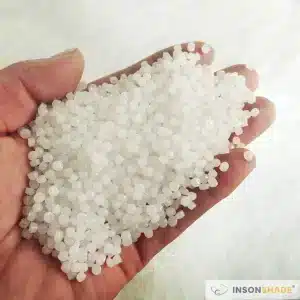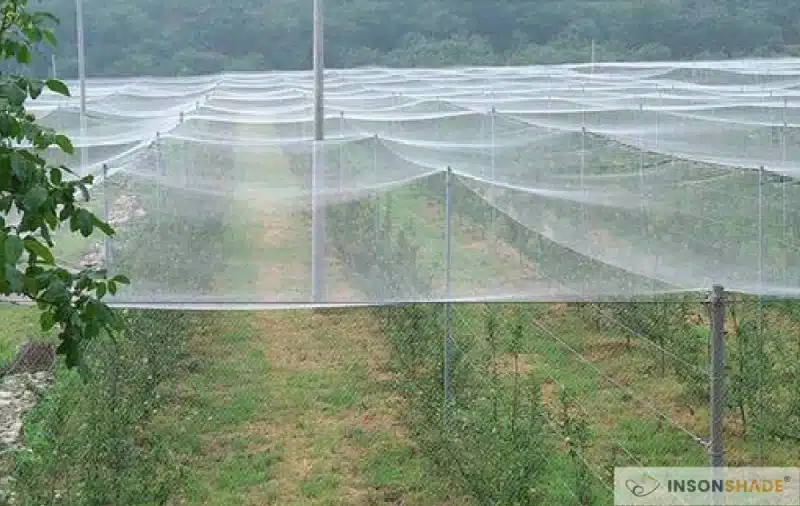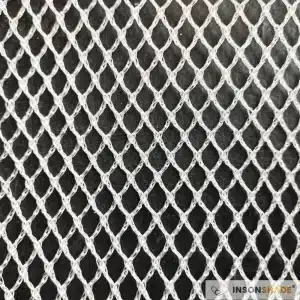Tomatoes, beloved and widely grown worldwide, face various growth challenges from seed to harvest. Especially as fruits ripen, they attract not just humans but various birds. Birds can peck at the immature fruits, reducing yield, damage, or even total crop loss. This risk is highest when the fruit starts to change color and emits a tempting scent.

Bird damage to tomato plants
Among the many methods to prevent bird damage, bird netting is a top choice for tomato growers. It offers direct, effective protection with minimal environmental impact compared to sonic devices or visual deterrents. In this article, we’ll dive into selecting the right bird netting for your tomatoes and installing and maintaining it for the best protection.
How to Choose Anti-Bird Nets for Tomato Plants
When picking bird netting for tomato plants, consider the size and habits of birds that could harm your crops.
1. Pick the Right Mesh Size
Different regions face different bird species threats. Common birds like sparrows, magpies, crows, and other small to medium birds might be drawn to tomato plants for food.
Choosing the right mesh size is crucial to prevent these birds from damaging the crops. Too large and small birds slip through; too small might block ventilation and light, affecting plant health. The recommended mesh size blocks the smallest target birds while being economical and practical. Generally, a mesh size of 1.5 cm to 2 cm (about 0.6 to 0.8 inches) stops most small to medium birds while allowing enough light and air to promote healthy plant growth.

Anti Bird Netting
2. Choosing Durable Bird Netting
Birds like pecking or finding gaps in nets. So, you may consider picking tough materials that can resist tearing. The choice of material also affects how much light gets through and the weight of the net. This impacts how well your tomatoes grow and how easy it is to put up the net. Here’s a quick look at the most common materials for bird netting:
| Characteristic | Polyethylene (PE) | Polypropylene (PP) | Nylon |
| UV Resistance | Great with UV blockers | Good | Okay, but wears out |
| Handles Heat | Good | Better than PE | Excellent |
| Strength | Stretchy and strong | Tough | The toughest |
| Absorbs Water? | Hardly any | A bit | Yes, affects size |
| Chemical Safe | Top-notch | Really good | Good |
| Weight | Light | Super light | Medium to heavy |
HDPE with UV Protection – A Top Choice for Tomato Nets:
HDPE bird nets, with added UV stabilizers, are super durable and weather-proof. They stand up to strong sun, wind, and temperature changes. UV blockers increase their life. Plus, HDPE nets are light and let enough light pass through, making them perfect for covering large areas.

100% Virgin HDPE

Craft the threads into bird netting
3. Where to Buy and Price Tips
Looking to buy bird netting for garden tomato plants? Check out garden stores and online shops like Amazon or eBay, or go straight to farming supply specialists. These places offer nets in various sizes and materials to match your needs. Prices usually range between $0.05 to $0.20 per square foot, depending on quality, mesh size, and UV protection.
Buying wholesale from agricultural net manufacturers is smart for big growers. It’s cheaper, and you can get nets custom-made to your farm’s needs. This includes choosing the right mesh size and getting nets that fit your farm’s layout perfectly. Wholesale deals can significantly cut your costs, but prices will vary based on how much you buy and what you need.
Remember, bird netting isn’t just about keeping birds away. Some nets, like those from INSONSHADE, also protect your tomatoes from hail in summer, making them a great investment for their versatility and reusability.
Tips for Using Bird Netting Effectively
Once you’ve got your netting, it’s time to cover your tomato plants. Here’s how to do it right, whether you have a small garden or a big farm:
1. For Small Gardens:
- Individual Plant Covers: Small cages or frames work well for a few plants. They’re easy to use and move around as needed.
- Row Draping Netting: For rows of tomatoes, set up supports and drape the netting over them. This is cost-effective for larger gardens.

Draped netting support
- Overhead Netting: For bigger areas, use lightweight covers above the tomato plants, keeping birds out without much support.
2. For Large Farms:
- Whole Area Covers: Set up a tall structure to cover your farm. It’s an investment but offers long-term protection.

Overhead netting
- Tunnel Structure: Build tunnels over your rows. This is common in commercial farming and combines bird protection with easy access to care.
3. 8 Additional Tricks for Installing Tomato Bird Netting
When installing bird netting for tomato crops, besides choosing the right covering method, several crucial tips can ensure the netting’s effectiveness and durability while minimizing potential negative impacts on plants and the environment.
- Install Before Ripening: The best time to install is before the tomatoes start ripening, usually after flowering and before the fruits change color. This is because ripe fruits attract birds the most.
- Monitor Bird Activity: If you notice birds showing interest in the plants or frequent activity around them, install the netting immediately.
- Ensure Enough Space: Make sure there’s enough space between the netting and the tomato plants to prevent birds from touching the plants and fruits. Use supports or frames to keep the net elevated and out of reach.
- Secure and Tension: Properly securing and tensioning the netting is essential to prevent it from being blown away or sagging, which reduces its protective effect. Ensure the edges are firmly anchored to the ground or other structures.
- Consider Wildlife: In some cases, bird netting can pose dangers to small wildlife, such as birds and bats getting entangled. Choose an appropriate mesh size and regularly check the net to reduce this risk.
- Maintenance Checks: Regularly inspect the integrity and fixation of the bird netting, repairing any damages promptly to maintain its effectiveness.
- Irrigation and Fertilization: Ensure the installation of bird netting doesn’t hinder irrigation and fertilization. Consider using a drip irrigation system or other methods to ensure plants receive enough water and nutrients.
- Seasonal Considerations: Depending on the region and local bird migration patterns, some seasons may have more severe bird problems. Therefore, the bird netting should be installed and removed according to seasonal changes and bird activity.
Conclusion
Bird netting offers an effective and environmentally friendly solution to protect tomato crops from bird damage. By carefully selecting the right net material, considering the covering method, and paying attention to the installation details and timing, growers can significantly reduce the impact of birds on their crops, thus protecting their harvest and increasing yield.
Remember, choosing and installing bird netting is not just for immediate protection but also an investment in future harvests. Maintaining and regularly checking the integrity of the bird netting ensures it continues to function effectively while also protecting against unintentional harm to wildlife. By taking these cautious measures, we can not only enjoy a bountiful tomato harvest but also contribute to maintaining ecological balance.

